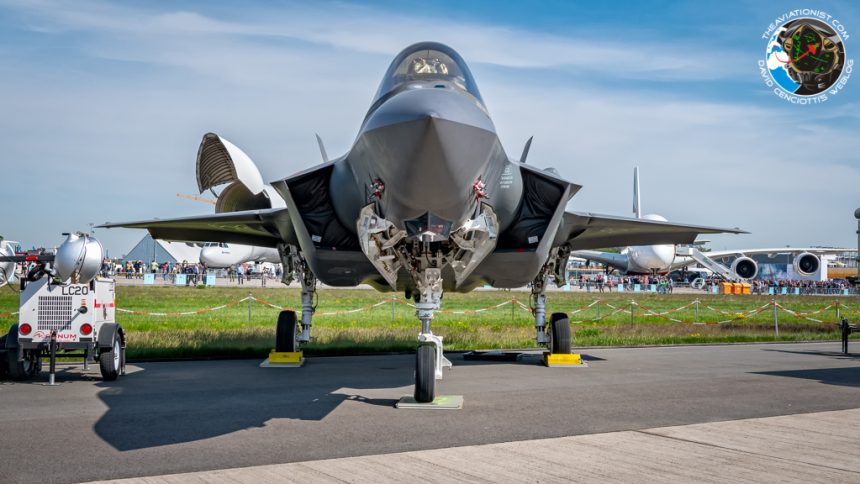Air Platforms in the Polish MoD’s Updated Technical Modernization Plan.
On Oct. 10. 2019, the Polish MoD adopted a new Technical Modernization Plan for the Armed Forces. The document constitutes one of the primary tools used by the government to map out the modernization efforts in the military. Overall, the plan this year envisages expenditure at the level of PLN 524 billion (about 133B US dollars).
The new plan covers the period between 2021 and 2035, also taking the year 2020 into consideration. The MoD claims that a decision to extend the planning period from 10 to 15 years would make the modernization process more efficient which is quite a bold statement.
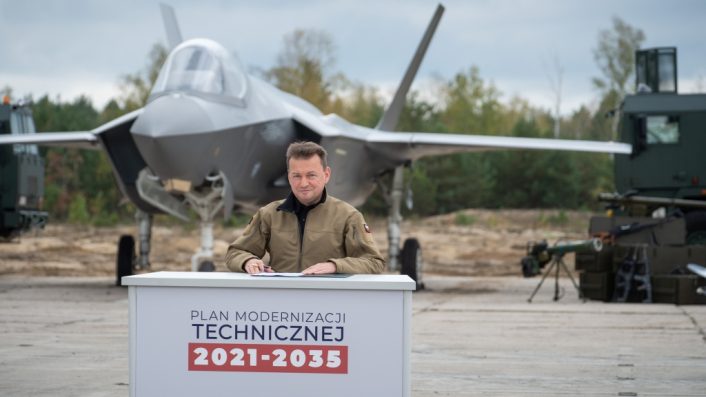
Air Platforms in Modernization of the Polish Military
Among the modernization priorities listed by the MoD, several have been placed in the air domain. These are as follows:
-
The key program listed by the MoD is the “Harpia” [Harpy Eagle] procurement. Its goal is to acquire 32 examples of the F-35A fifth generation multi-role combat aircraft. This program is already progressing, with negotiation with the US government happening as this text is written. The Congress has already given a green light to Poland making this acquisition.
-
“Harpi Szpon” [Harpy Claw] is a new program in the air domain that we have not heard about so far. The initiative is to see Poland being involved in the “loyal wingman” program aimed at developing a new UAV platform with a purpose of manned/unmanned teaming (M/UMT). A stealth platform as such, working with the fighter aircraft, would learn the behaviours of the fighter pilots at the training stage, as the MoD suggested. Then it could be used in strike or recce sorties behind the enemy lines. This program is a new initiative, only announced now.
-
The new technical modernization plan also envisages extra procurement of the F-16 jets for the Polish Air Force, with amounts being allocated to that purpose. The skeptics suggest that this has been done, should the MoD cut the F-35 procurement in half, to maintain the Polish Air Force in shape quantitatively at least. This program is a novelty as well, and never has been heard about before now.
-
“Obserwator” [Observer] program is another new initiative connected, at least partially, to the air domain. Its aim would be to procure IMINT (Imagery Intelligence) assets, primarily in the form of satellites and microsatellites. Despite the above, the MoD also noted that Poland would like to procure drones and reconnaissance aircraft. All of the imagery gathered would be collected and analyzed at a dedicated IMINT analysis facility and then disseminated among the forces for operational use.
-
Polish MoD is going to continue the “Wisła” and “Narew” [names derived from the Polish rivers] programs aimed at creating a multilayered IADS system in Poland.
-
“Kruk” [Raven] program is the only initiative undertaken by the MoD in the domain of rotary-winged aircraft. It is aimed at acquisition of modern attack helicopters for the Army. The Polish MoD already acquired micro-fleets of helicopters for the Navy (AW101 platform) and for the Special Operations component (S-70i Black Hawks). These are, in our opinion, far from sufficient. Following the tanking of the Caracal contract the helicopter acquisition policy that Poland adopted has been chaotic to say the least.
-
“Groszek” [Peas] is another program that has remained in the shadows so far. It is aimed at acquisition of submunition pods for the fighter aircraft that could be employed in airstrikes against airfields and mechanized/armoured units. No specifics have been provided as to what type of weaponry would be acquired here. However, unless the MoD decides to procure pods that would be gliding or autonomously flying, like a cruise missile, the idea seems to be obsolete from the very start.
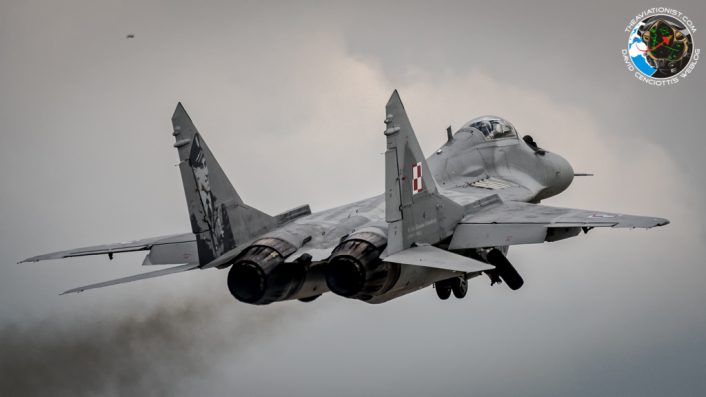
Other Domains
In the Naval Domain, the Polish MoD wants to pursue “Miecznik” [Swordfish] coastal defense vessel and “Orka” [Orca] submarines programs (with gap filler expected to be used in the latter case). Poland would also like to procure 6 missile boats, within the scope of “Murena” [Moray eel] program.
In the land domain, Polish MoD is looking forward to continuing the Homar missile program. Here, the Lockheed HIMARS system has already been acquired, but new capabilities are also expected to be established, through acquisition of a launcher that would be able to attack targets at a distance of up to 300 kilometers.
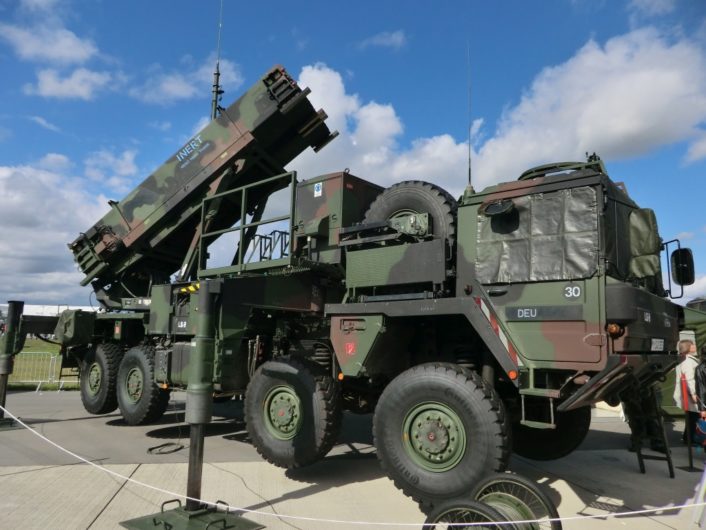
Poland is also going to continue procurement of the Krab self-propelled howitzers, Rak self-propelled mortars and Rosomak APCs. It is also expected that the BWP-1 platform would be replaced by the Borsuk IFV. Another new program is the “Wilk” [Wolf] project aimed at developing new MBTs. “Balsa” program, on the other hand, would be initiated to acquire new bomb disposal robots. Another interesting initiative in the land domain is the “Ottokar-Brzoza” program., the goal of which would be to create a regiment of tank-destroyer vehicles.
Polish MoD is also going to continue the cyber.mil program aimed at further development of the Polish cyberspace defense capabilities.
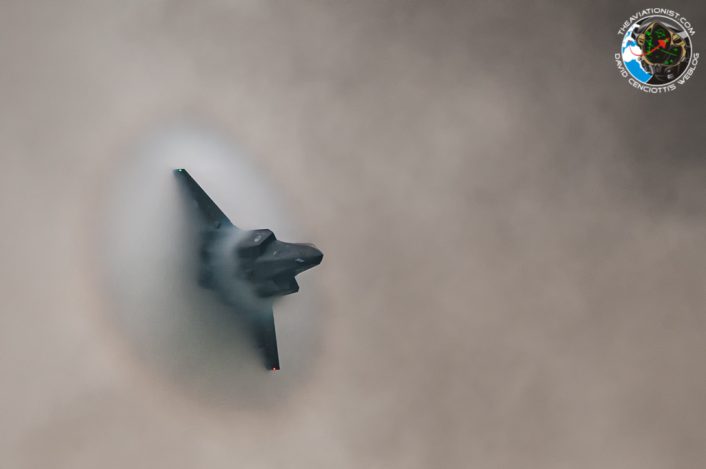
Opinions of the Polish Defense Analysts
It seems that the new Technical Modernization Plan still disregards the Navy, placing the maritime domain somewhat behind the air and land domains. It is quite interesting though that the Polish MoD has initiated several new programs that we have never heard of before, in the air domain. The experts, however, exhibit a reserved approach towards the promises made by Mariusz Błaszczak, the head of the MoD.
Marek Świerczyński, working for the Polish think-tank, Polityka Insight, claims that we should still wait and see, as to what programs would become reality:
Despite the declared breathtaking price-tag of 524 billion zlotys, offered by the MoD to advertise the new plan, we have not actually been given much information about what is inside, what are the allocations, when and how the procurement should happen over time. Therefore the announcement – made just four days before the national election – in my view should be perceived as a campaign event for the ruling party and defense minister Mariusz Błaszczak himself rather than a cornerstone of technological breakthrough. That said, if the most ambitious plans – like the F-35-F-16-loyal wingman or comprehensive long range reconnaissance/surveillance – will get real traction and sufficient funding soon, they will definitely elevate the Polish armed forces to a different level of technological prowess. We shall see which programs will be picked and put into implementation by the next government (which actually may not be different than the current one) and only after some time we will be able to assess how groundbreaking the new TMP really is.
Marek Świerczyński, Polityka INSIGHT
In general, there is a consensus among the experts – the Technical Modernization Plan may be one thing, implementation of the declared intention is a whole other issue.

Mariusz Cielma, editor in chief at the Polish Nowa Technika Wojskowa monthly suggests that realism of the plans is a matter that should be looked at primarily, agreeing with Świerczyński. Cielma notes that as ambitious the plans may be, the economy is also an important factor that shall be considered:
A modern military needs to utilize the air domain to the fullest. Poland, meanwhile, is positioned geopolitically in a way that forces it to remain in possession of modern armed forces. Hence, it shall not be a surprise that the air domain programs are emphasized by the MoD and that they all have been included in a new Technical Modernization Plan that, for the first time in history, covers a period of 15 years. The most important investment, pertaining to the acquisition of 32 F-35 fighter aircraft has been already known for some months now. Now also an interesting concept of becoming a part of the “loyal wingman” initiative also emerged, along with procurement of more F-16, with the latter requiring further funding. Space domain program is a novelty in the set of capabilities of the Polish military that now expressed its ambition to be in possession of satellites and microsatellites, thus having national space reconnaissance and SATCOM capabilities. SATCOM is to be a result of important experimental exercises conducted by the Polish military. It is also necessary to fully utilize the capabilities stemming from the F-35 procurement.
Matter that is somehow separate is the realistic nature of those plans. The modernization plans we have been witnessing in the past show that only around 50% of the plans become reality. It is a result that is far from impressive. The Polish MoD faces a serious challenge, when it comes to consequent implementation of the approved modernization programs. The first ever plan that covers a period of 15 years is necessary, however it contains a lot of questionmarks, pertaining, above all, to the financial condition in which Poland may find itself in the upcoming years. The economic history, not only of Poland, teaches us that in years that are tough, budgetary-wise, the military is the first place where cuts are introduced. Numerous intentions that make it more difficult to create a modern military with advanced armament and equipment are not helping either. Here we are referring to the intention to quantitatively grow the Armed Forces, create a new Division in the Land Forces and form 50-thousand strong Territorial Defense Forces component. Despite the economic prosperity, the number of the adopted programs does not allow the beholder to perceive a full implementation of those with a high degree of optimism. One could only hope that the most important ones, realistically bolstering the capabilities of the Polish military, are accomplished as planned.
Mariusz Cielma, Nowa Technika Wojskowa monthly, Editor in Chief

Michał Piekarski, PhD, expert working at the University of Wroclaw, also pointed out that the Technical Modernization Plan implemented by the Polish MoD is not completely separate from the results of the analysis conducted at the state defense think-tanks:
The emphasis placed, within the new plan, on air platrorms and air-domain capabilites is the most surprising element of the new Technical Modernization Plan, from the strategic perspective. Serious upgrade, in terms of quality and quantity, means that we would put more attention to the air domain, while traditionally Poland was usually putting its emphasis on the land forces. One of the interesting matters is the fact that Gen. Andrzejczak noted that preliminary results of the long term analysis of the operational landscape somehow overlap with the Plan. The analytical effort in question, known as NUP2x35, is aimed at description and predictions pertaining to the operational environment up to 2035. It is conducted by the General Staff and Center of Training and Doctrine. Therefore it seems that directions declared in TMP were based on the preliminary results of the said program.
Michał Piekarski PhD, University of Wrocłąw
Matter that remains somewhat separate are the assumptions adopted throughout the doctrinal analysis. However, the coherence between the plan and the analytical effort shall be perceived positively.
Is Poland able to make a leap across generations?
All things aside, the F-35 procurement, being the most significant component of the Technical Modernization Plan in the air domain, will need more foundational assets, so that the Polish military ecosystem can fully accommodate and utilize the sensor fusion capabilities of the fifth generation fighter aircraft. We shall also hope that the Technical Modernization Plan adopted by the Polish MoD also accounts for all of the logistics pertaining to introduction of the F-35.
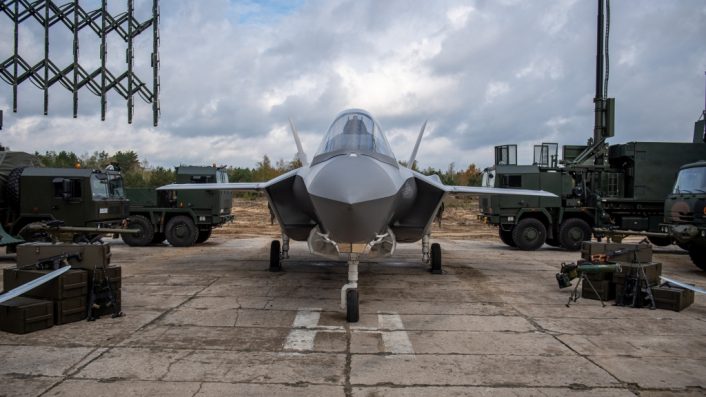
in Kielce. Image Credit: Polish MoD
Noteworthy, there is also another, general consensus among the Polish analysts. Poland will need to go to great lengths to be able to harness the new capabilities that the Lightning II offers, and also the operational doctrine of the Air Force would need to evolve. This is, at least to some extent, visible and reflected in the new Technical Modernization Plan adopted by the MoD (in the SATCOM domain for instance). How far and deep the integration would be, we shall still see. The pilots we have spoken to are praising the capabilities that the F-35 would offer, but they are also worried that Poland does not have what it takes to operate the jet to its fullest potential (within the scope of data fusion and logistics and maintenance).
We shall also see how the new plan would withstand the post-election landscape. Poland had parliamentary election last Sunday, Oct. 13. Even though to significant shift of power is expected, with the PiS (Law and Justice) party still leading in the exit polls, as this text is being written, the dialogue on defense matters may also evolve.

